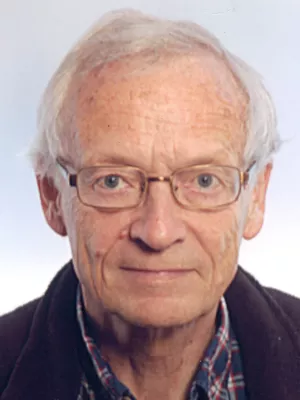
Torben Andersen
Professor emeritus (Leave of Absence)

The Carlina-type diluted telescope Stellar fringes on Deneb
Author
Summary, in English
Context. The performance of interferometers has been much increased over the past ten years. But the number of observable objects is still limited by the low sensitivity and imaging capability of the current facilities. Studies have been conducted with the aim to propose a new generation of interferometers. Aims. The Carlina concept studied at the Haute-Provence Observatory consists of an optical interferometer configured as a diluted version of the Arecibo radio telescope: above the diluted primary mirror made of fixed co-spherical segments, a helium balloon or cables that are suspended between two mountains and/or pylons carry a gondola containing the focal optics. This concept does not require delay lines. Methods. Since 2003, we have been building a technical demonstrator of this diluted telescope. The main goals of this project were to find opto-mechanical solutions to stabilize the optics attached to cables at several tens of meters above the ground, and to characterize this diluted telescope under real conditions. In 2012, we obtained metrology fringes, and co-spherized the primary mirrors within one micron accuracy. In 2013, we tested the whole optical train: servo loop, metrology, and the focal gondola. Results. We obtained stellar fringes on Deneb in September 2013. We here present the characteristics of these observations: quality of the guiding, signal-to-noise ratio reached, and possible improvements for a future system. Conclusions. By detecting fringes on Deneb, we confirm that the entire system conceptually has worked correctly. It also proves that when the primary mirrors are aligned using the metrology system, we can directly record fringes in the focal gondola, even in blind operation. It is an important step that demonstrates the feasibility of building a diluted telescope using cables strained between cliffs or pylons. Carlina, like the Multiple Mirror Telescope (MMT) or Large Binocular Telescope (LBT), could be one of the first members of a new class of telescopes named large diluted telescopes. Its optical architecture has many advantages for future projects: Planet Formation Imager (PFI), post-ELTs, interferometer in space.
Department/s
- Lund Observatory - Undergoing reorganization
Publishing year
2015
Language
English
Publication/Series
Astronomy & Astrophysics
Volume
573
Document type
Journal article
Publisher
EDP Sciences
Topic
- Astronomy, Astrophysics and Cosmology
Keywords
- instrumentation: high angular resolution
- instrumentation:
- interferometers
- telescopes
Status
Published
ISBN/ISSN/Other
- ISSN: 0004-6361

